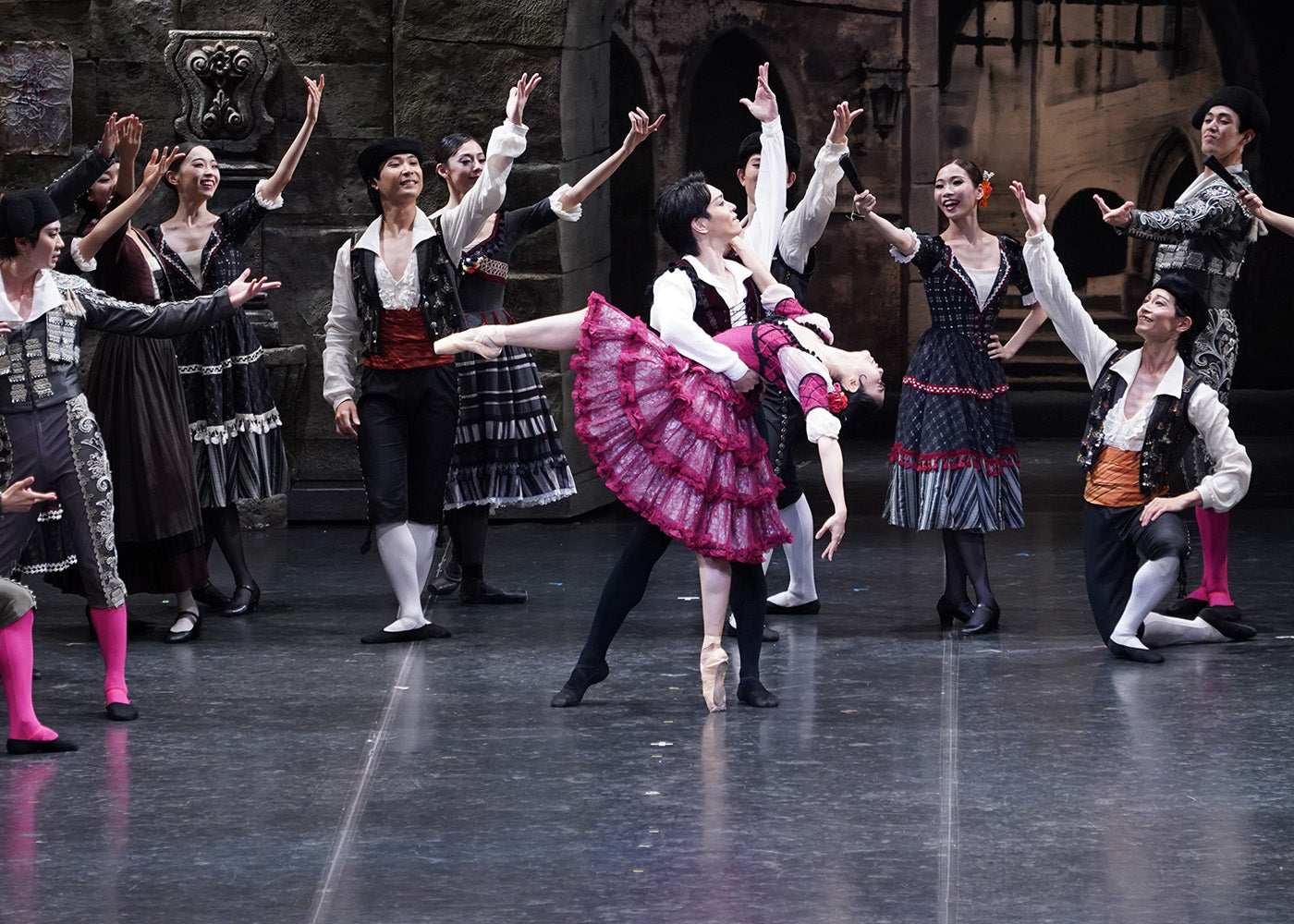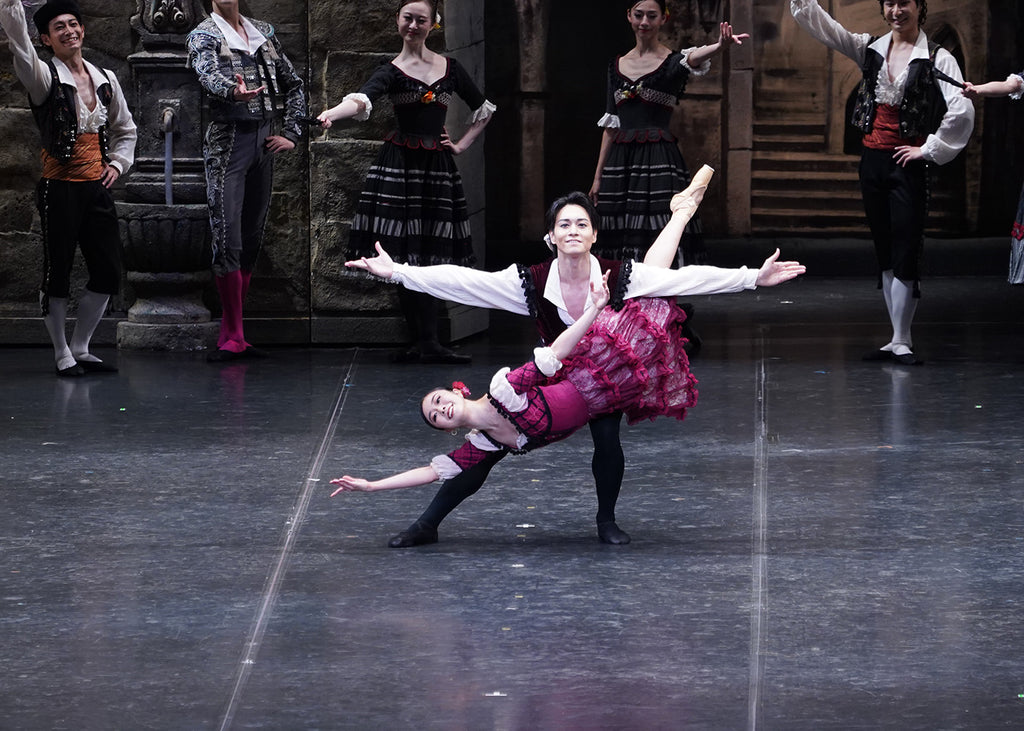Where Kumakawa’s version excels, above all else, is the technical verve of the dancing. This, out of all ballets, is the one most connected to his own technical brilliance as a dancer, and there’s a skilled leveling-up across every role.
English National Ballet’s lead principal Shiori Kase led the night as Kitri, partnered by K-Ballet Tokyo principal Masaya Yamamoto as Basil. Kase’s sharp footwork, precise balance and clean turns impress throughout, with nary a wobble or miscue, despite being a guest artist.
Yamamoto, always astounding with his precision and strength, brings a comic self-awareness and relaxed gregariousness to Basil, his third time in the role. His characterization humorously subverts Kase’s flippant coolness. Their choreographed banter delights, culminating in the thrillingly held lifts, midway through the act.
Part of the magic of “Don Quixote” is the abundance of stunning performances. Momoko Fusegawa as Mercedes and Hirotaka Yamada as Espada excel with such a flurry of technical skill it was hard to keep track. Backed by the crisp artistry of the bullfighters’ ensemble, another joy is noticing the constant realism framing the dancers—the drinking, the card games, the squabbles—that adds to the authenticity of the staging.











comments